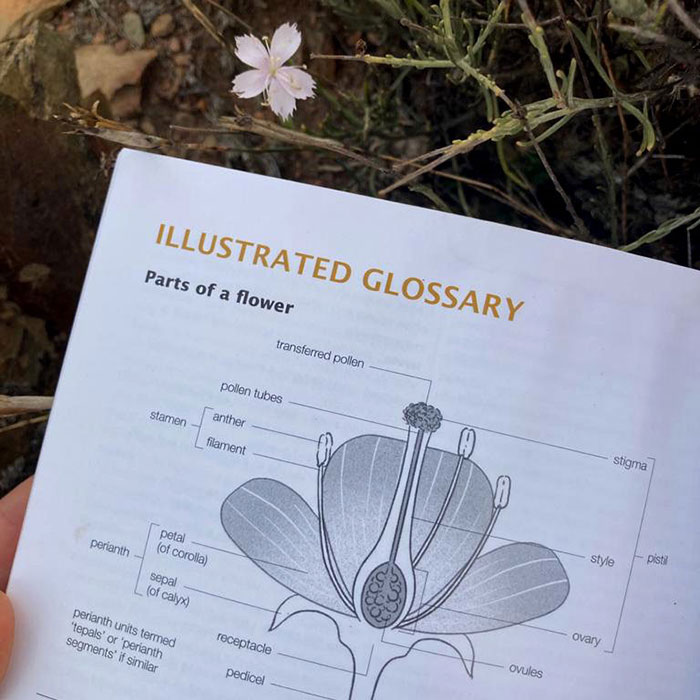The style isn’t always a sign of how trendy you are. And a pistil might sound dangerous, but is usually quite the opposite.
These are words we all likely learnt in biology class at school. But do you remember the various parts of a flower, and what they do?
On International Plant Appreciation Day, there’s no better time for a quick refresher course, as captured in the ‘Field Guide to Renosterveld of the Overberg’. How much do YOU remember?
Stigma: This is situated on top of the style, and is the part of the pistil where pollen germinates.
Style: The ovary is connected to a long style, which is then topped by a stigma.
Ovary: The ovary is the enlarged portion at the base of the pistil which contains the ovules. These develop into the seeds when fertiilised.
Pistil: This is the female organ of a flower comprising the ovary, style and stigma.
Ovules: The ovules are contained in the ovary, and once these are fertillised, they become the seeds.
Pollen tubes: When pollen is deposited on the stigma of a flower, it forms the pollen tube.
Anther: This is the pollen-bearing part of a flower, usually the end part of the stamen.
Filament: The filament is the stalk of the flower that supports the anther (which is where the pollen develops). The filament and the anther together form the stamen.
Stamen: The stamen is the male reproductive part of a flower consisting of a stalk-like filament with a pollen-bearing anther at or near the tip.
Petal (Corolla): These are modified leaves of a flower that are typically coloured. All the petals of a flower together are known as the corolla, whether they are free, partly fused or fully fused into a tube.
Sepal (Calyx): A number of (often four or five) leaf-like structures that protect a flower during early development. The calyx consists of separate or fused sepals, and when the sepals fuse together, they form the calyx tube.
Perianth: The corolla (the petals) and the calyx (the sepals) together are known as the perianth.
Receptacle: The receptacle is the stem of the plant to which the floral organs are attached.
Pedicel: This is the stalk of a single flower.
Above: Dianthus albens
-

Hats
R300.00
This information is sourced from the Field Guide to Renosterveld of the Overberg, written by Odette Curtis-Scott, Mike Goulding, Nick Helme, Rhoda McMaster, Sean Privett and Charles Stirton.
This is the first guide to Renosterveld in the Overberg written, and includes 980 plant species and 140 animals you’ll find in this habitat.




